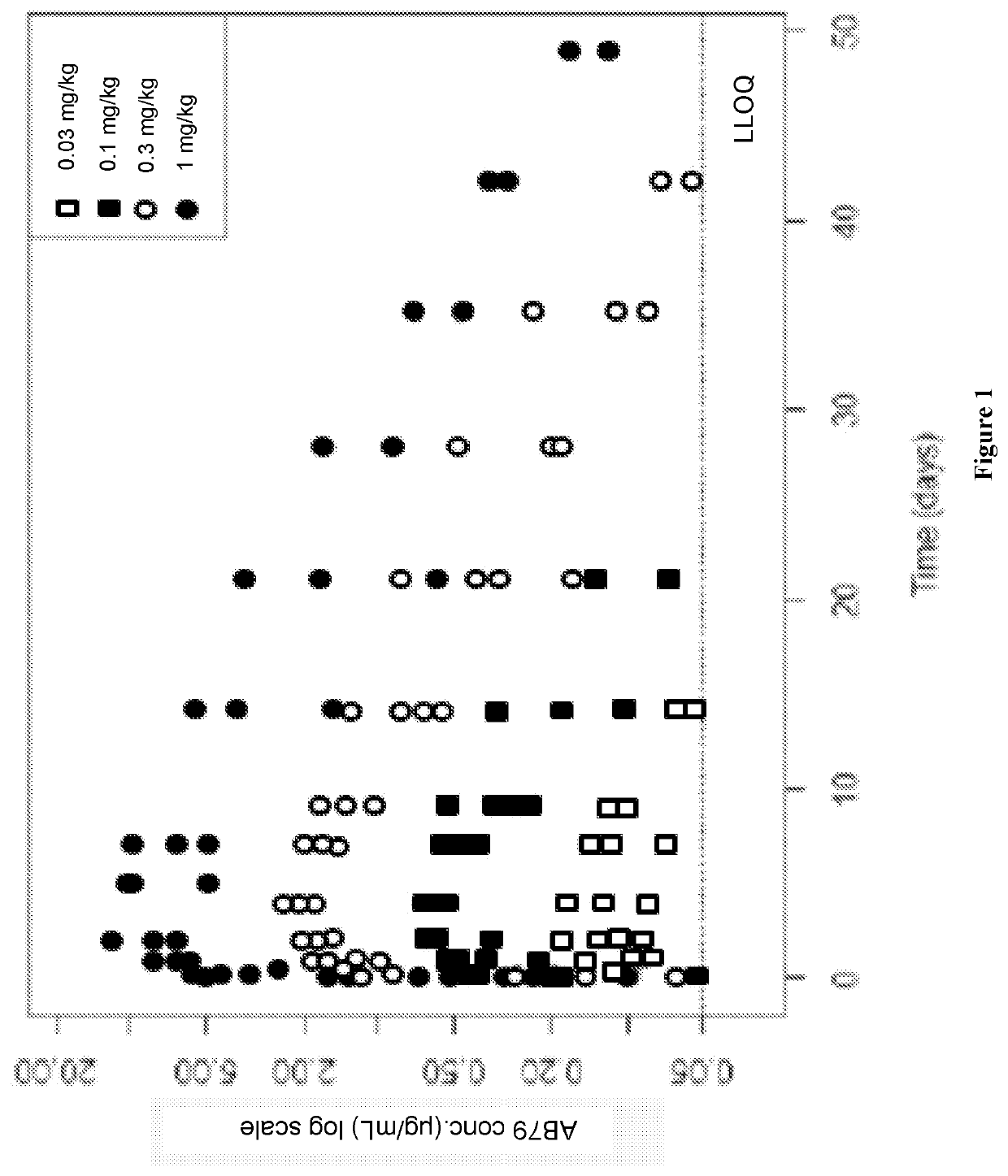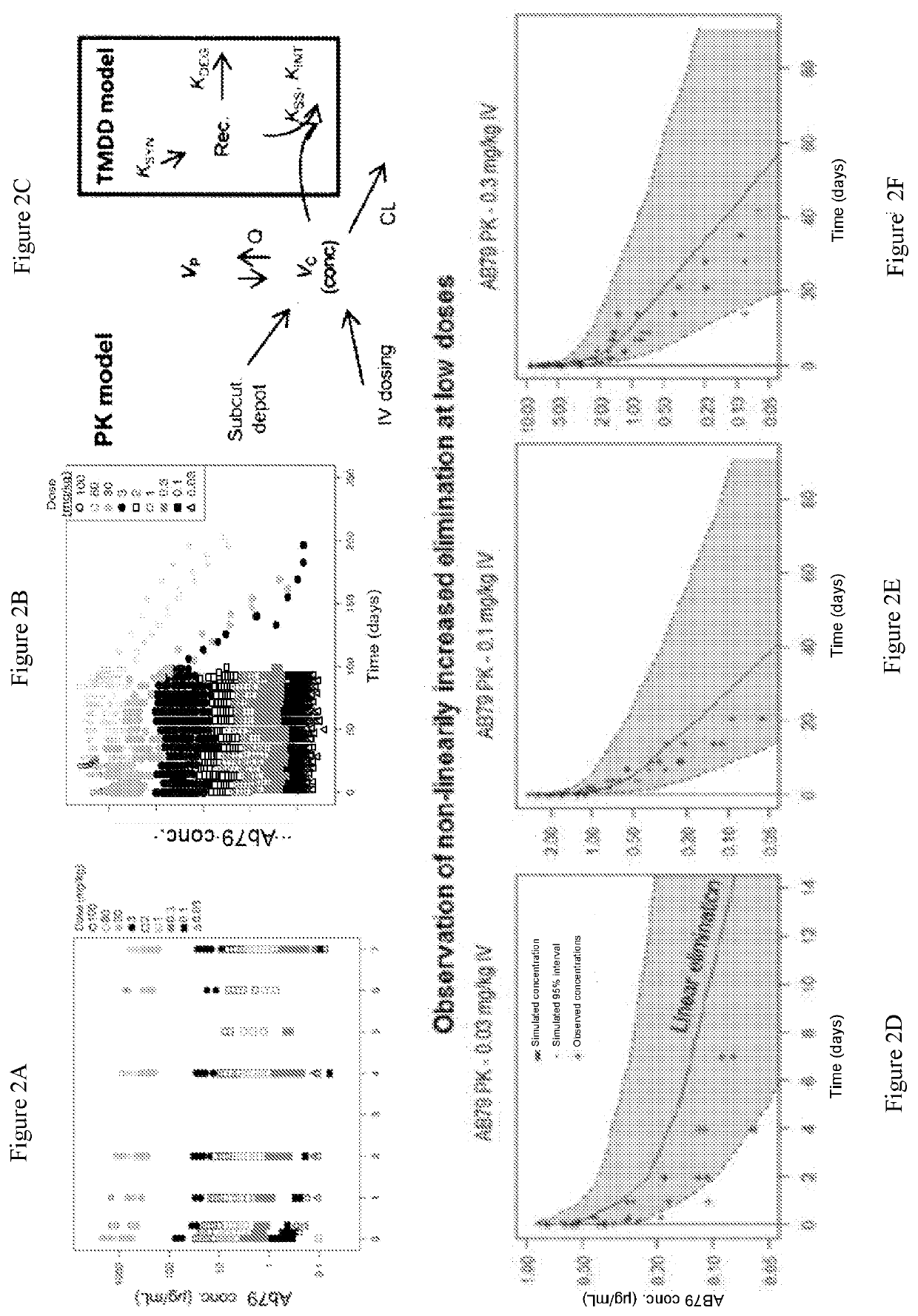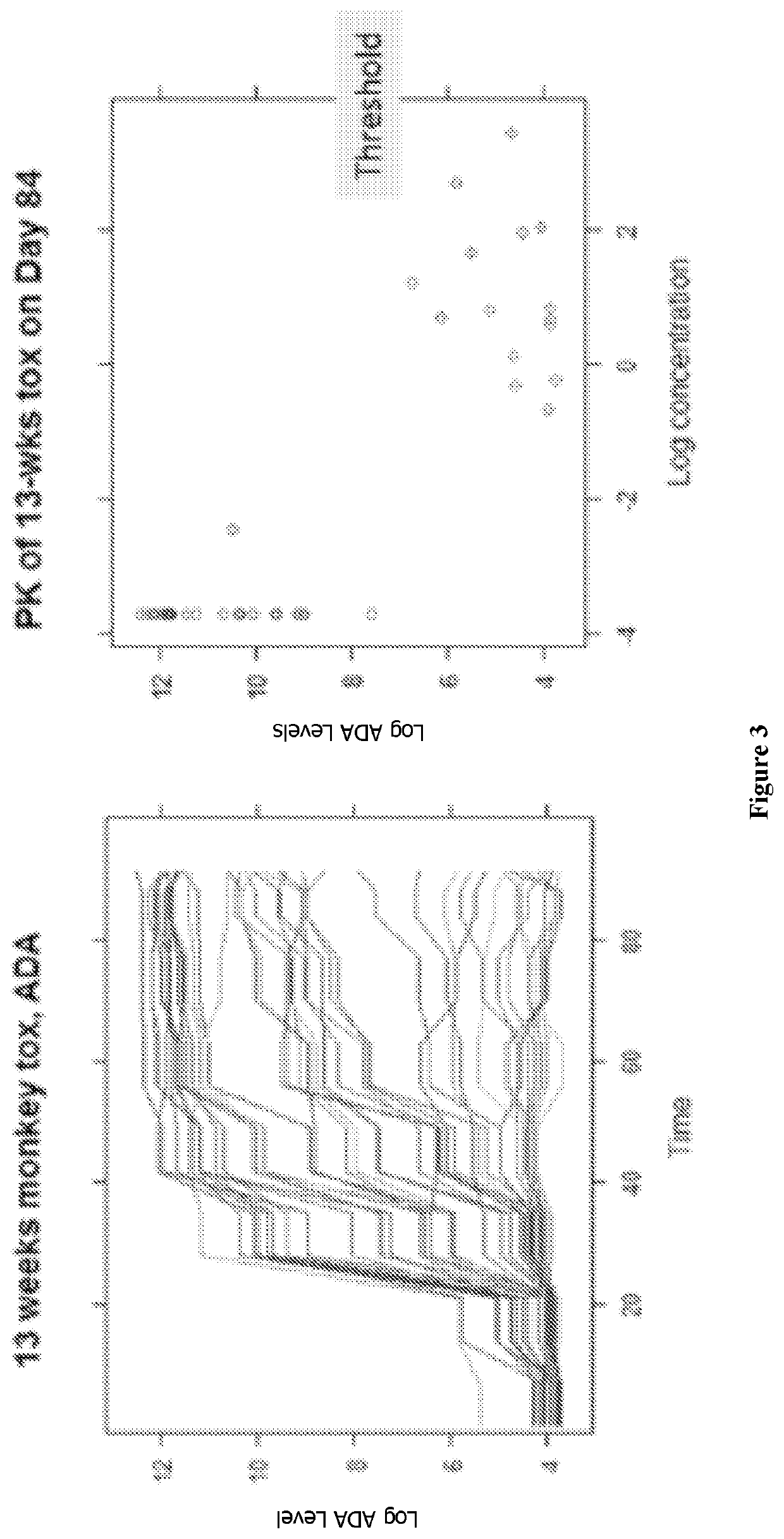Subcutaneous administration of Anti-cd38 antibodies
- Summary
- Abstract
- Description
- Claims
- Application Information
AI Technical Summary
Benefits of technology
Problems solved by technology
Method used
Image
Examples
example 1
Model-Based Characterization of Anti-CD38 Antibody in Cynomolgus Monkey
[0258]Anti-CD38 antibody AB79 binds cynomolgus monkey (cyno) CD38, distinguishing it from daratumumab (Darzalex™), a cytolytic CD38 monoclonal antibody recently approved for the treatment of multiple myeloma. This unique function supported the use of cyno for preclinical studies to characterize AB79 pharmacokinetics (PK), pharmacodynamics (PD) and safety. To this end, assays were developed to measure drug concentrations, immunogenicity, and to quantify T, B, and NK lymphocytes in the blood of cyno monkeys. We assessed these parameters in 8 pharmacological and toxicological preclinical studies. Of the tested cell populations, CD38 is most highly expressed on NK cells; therefore, we assume that the drug effect on NK cells comes closest to the effect on the considered target cells, the plasmablasts, plasma cells and other activated lymphocytes.
[0259]Data was pooled from 8 studies in healthy monkeys using a dose rang...
example 2
CD38+ Cell Depletion by AB79
[0308]Table 6 shows that AB79 mediates cell depletion by antibody dependent cellular cytotoxicity (ADCC) and complement dependent cytotoxicity (CDC). Cell lines with increased CD38 expression were more susceptible to ADCC. No ADCC was seen in a human lymphoblast cell line that did not express CD38 (MV-4-11) or with a Chinese hamster ovary cell line transfected with CD157, a molecule closely related to CD38 (data not shown). Unlike other B cell-selective therapies which target CD20 and do not directly deplete plasmablasts, which are CD20low / negative, CD38 is expressed at high levels on plasmablasts and plasma cells making these cells a direct target of AB79. In vitro studies with human blood cells and cell lines showed that binding of AB79 to CD38 did not result in PBMC cytokine activation demonstrating that AB79 is not an agonist, as discussed below. Rather, AB79 mediated cell depletion of human B lineage cell lines by ADCC and CDC and in most cases cell ...
example 3
Evaluation of AB79 Binding to Human and Cynomolgus Monkey Red Blood Cells and Platelets
[0319]AB79, a fully human, high affinity, non-agonist, IgG1 monoclonal Ab directed to human CD38, was evaluated to determine its binding to human or cynomolgus monkey (cyno) red blood cells (RBC) or platelets. Thirty blood samples from healthy human volunteers and thirty whole blood samples from healthy cynos were evaluated for AB79 binding, in comparison to an isotype matched control monoclonal antibody, Palivizumab, of irrelevant specificity that does not bind to RBC or platelets.
Methods
[0320]Blood samples from 30 normal human subjects (15 male and 15 female) for platelets, 25 male and 5 female for RBCs) and 30 cynos of Chinese origin (15 male and 15 female) were purchased from Bioreclamation, (Long Island, N.Y.). Whole blood was collected in sodium citrate tubes and shipped overnight at ambient temperature.
[0321]For the evaluation of AB79 binding to platelets, 50 μL of whole blood was stained w...
PUM
| Property | Measurement | Unit |
|---|---|---|
| Fraction | aaaaa | aaaaa |
| Fraction | aaaaa | aaaaa |
| Fraction | aaaaa | aaaaa |
Abstract
Description
Claims
Application Information
 Login to View More
Login to View More - Generate Ideas
- Intellectual Property
- Life Sciences
- Materials
- Tech Scout
- Unparalleled Data Quality
- Higher Quality Content
- 60% Fewer Hallucinations
Browse by: Latest US Patents, China's latest patents, Technical Efficacy Thesaurus, Application Domain, Technology Topic, Popular Technical Reports.
© 2025 PatSnap. All rights reserved.Legal|Privacy policy|Modern Slavery Act Transparency Statement|Sitemap|About US| Contact US: help@patsnap.com



